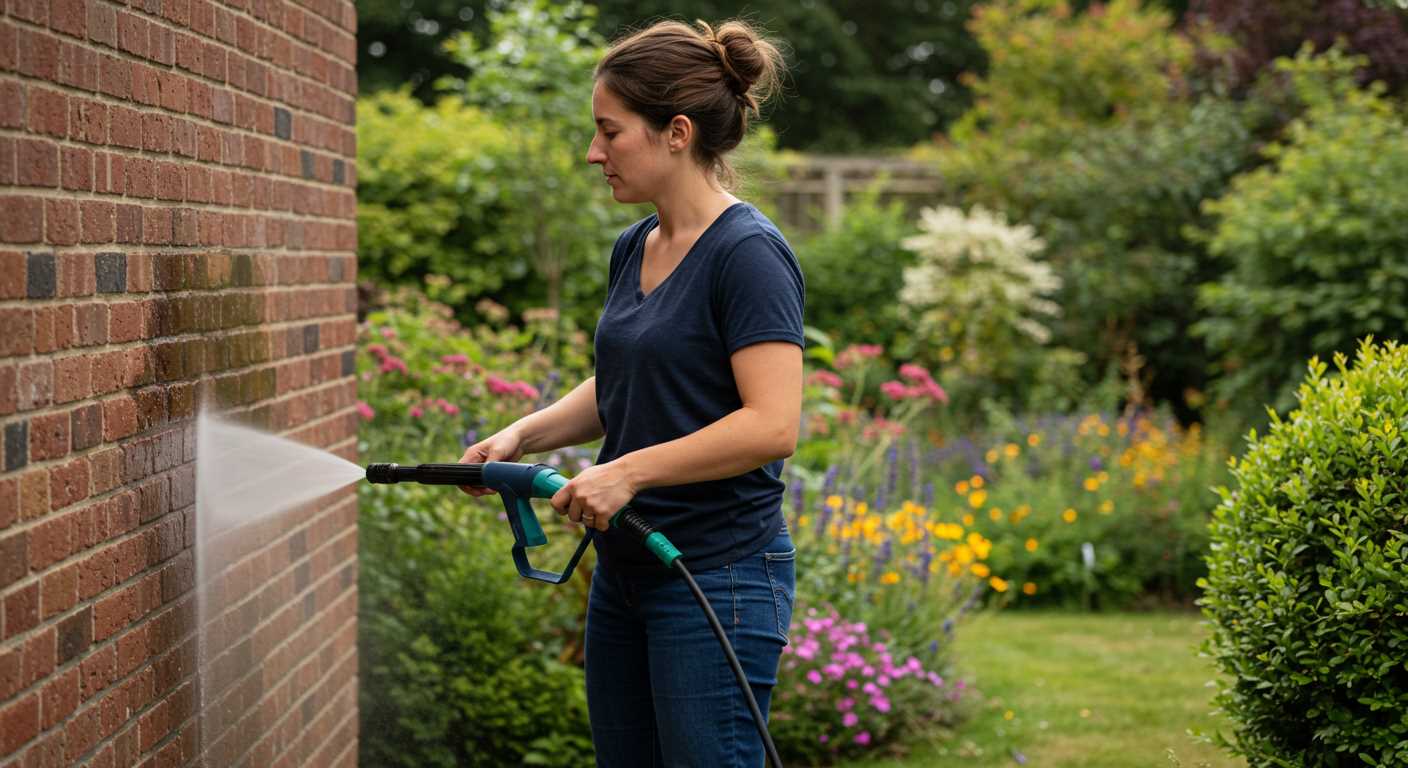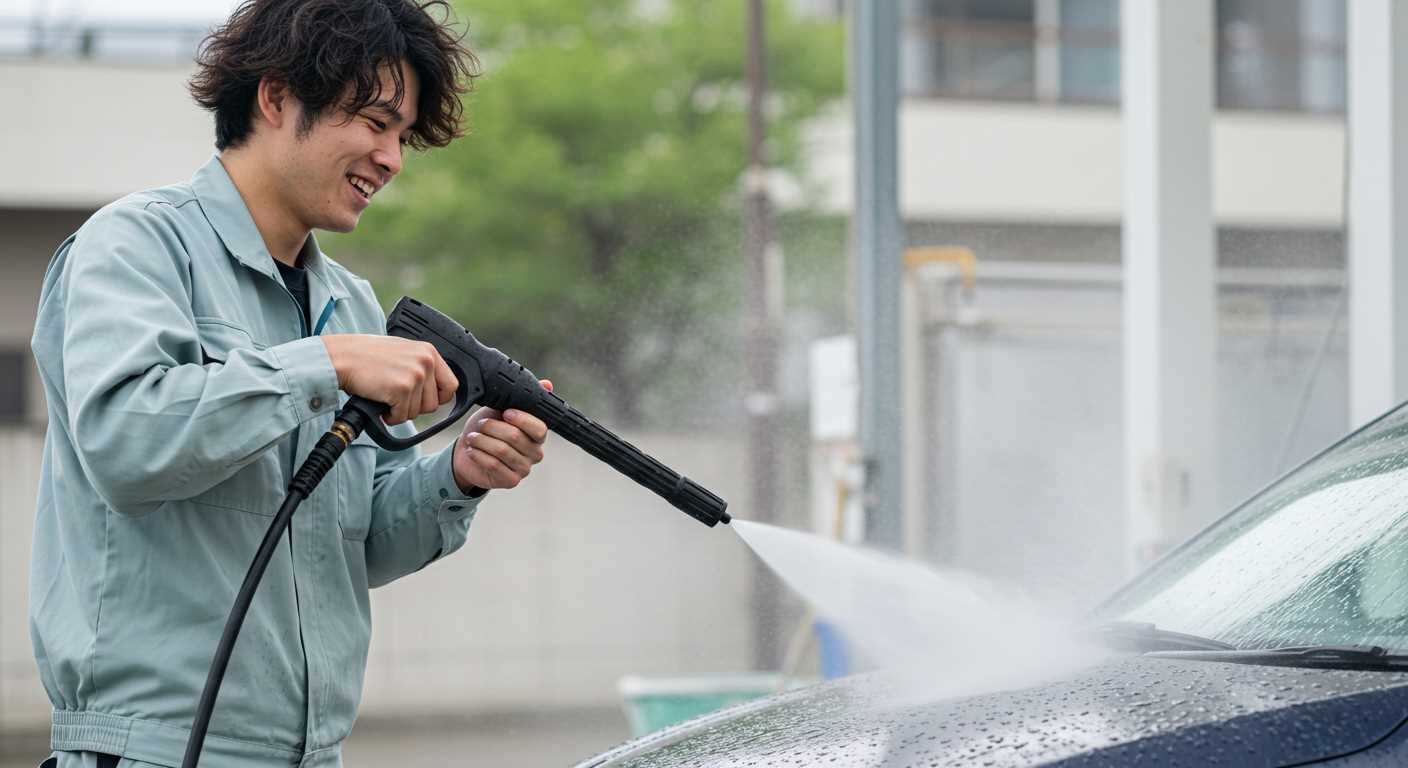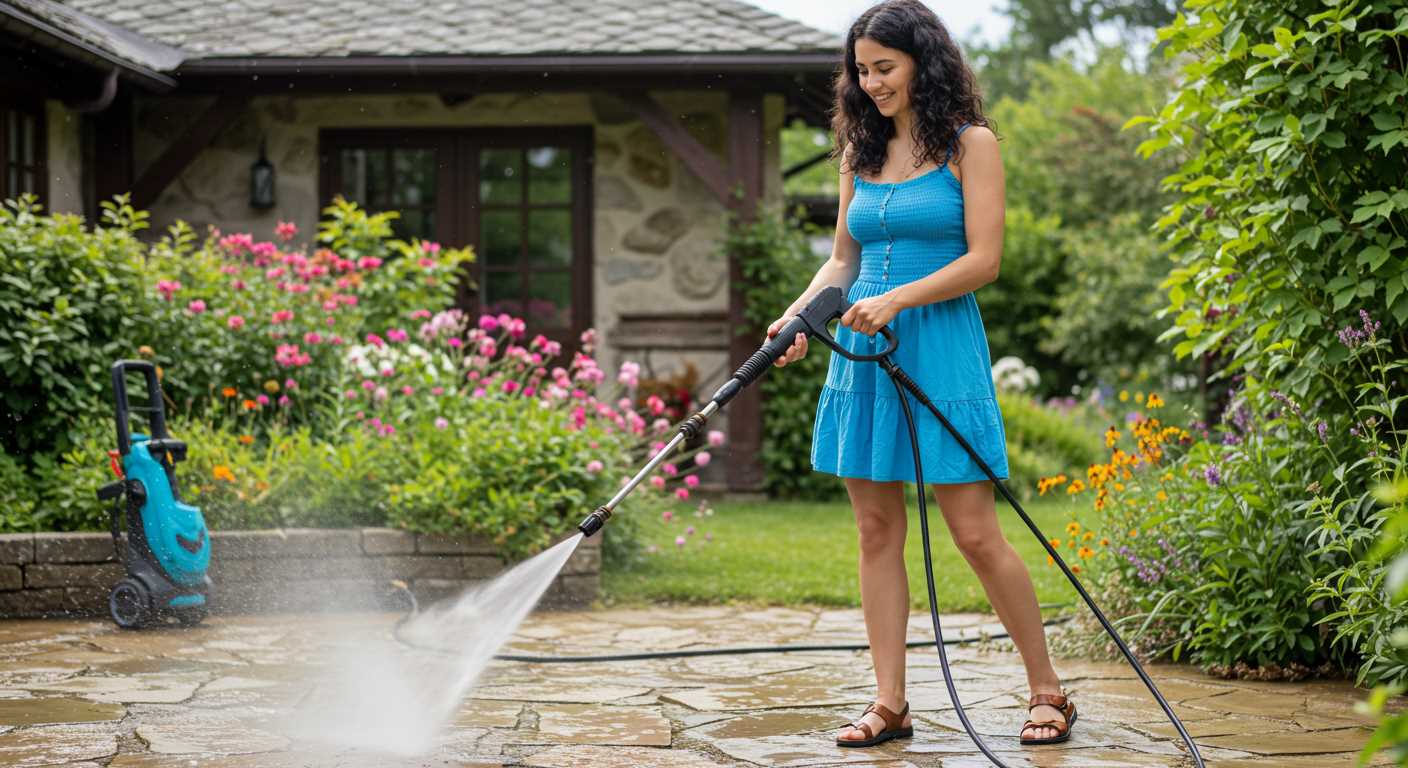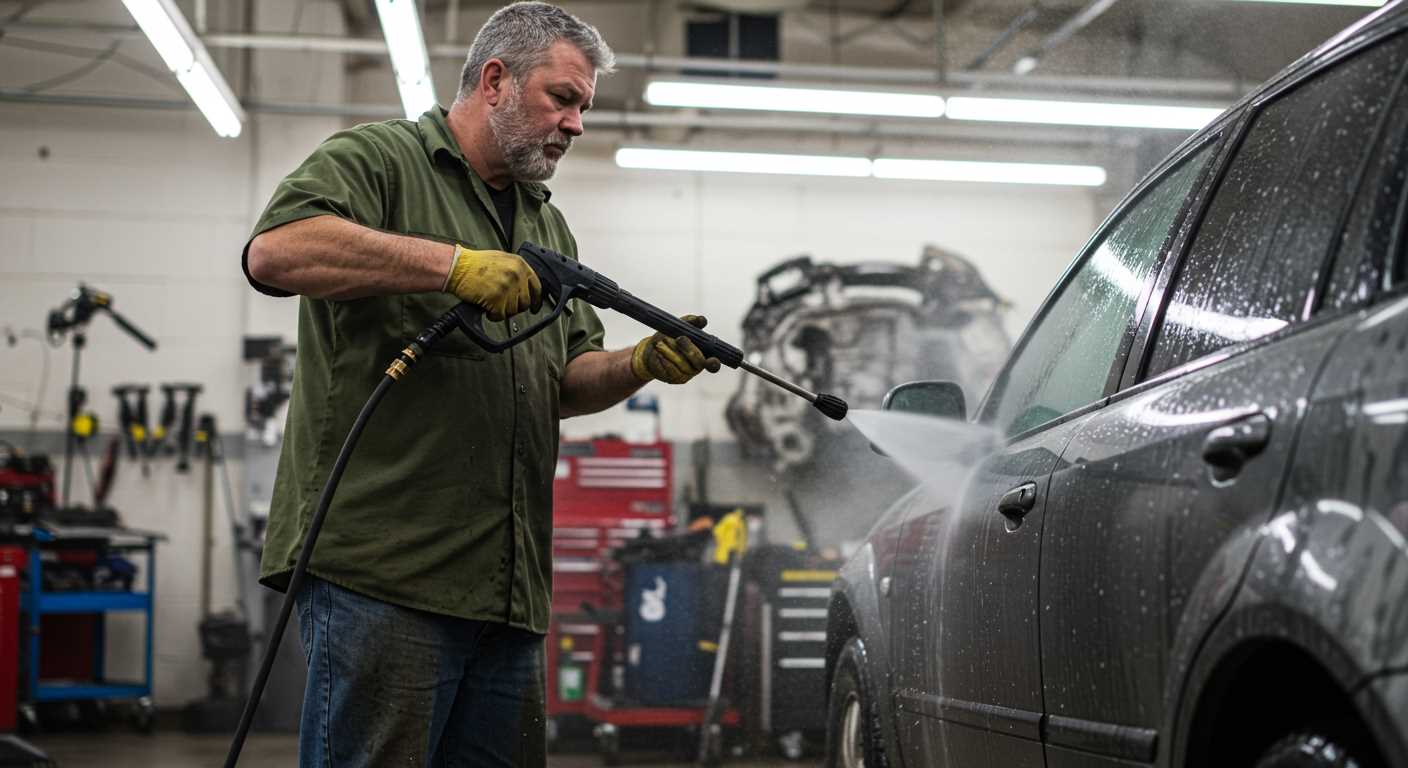



Absolutely, sanitising your outdoor seating is straightforward and can yield remarkable results when executed correctly. Start by assessing the materials; if they are made of durable plastic, then their resilience allows for a thorough cleansing without worries about damage. For stubborn stains or grime, a gentle yet effective approach is essential.
Opt for a low-pressure setting, as excessive force could lead to chipping or unexpected wear. A thorough rinsing and a mild detergent is advisable, ensuring all residues are removed. For optimal results, apply a soft brush to areas with more deeply embedded dirt.
Always keep a safe distance from the furniture while washing and avoid direct spraying on joints or connections to prevent water ingress that could compromise structural integrity. By following these guidelines, your outdoor seating will not only look refreshed but will also extend its lifespan significantly.
Washing Outdoor Furniture with Strong Equipment
Avoiding high power cleaning on delicate outdoor furnishings is crucial; using intense water jets can lead to damage. My recommendation is to set the tool to a lower pressure level. If your outdoor seats have stubborn stains or mould, pre-treating with a gentle cleaning solution will significantly improve results.
Ensure a distance of at least 30 cm from the surface to prevent scratches or excessive wear. Directing the water at an angle rather than straight-on further minimises risks. Always test a small, inconspicuous area first to gauge how the material reacts.
Rinse the furniture thoroughly afterwards to eliminate any residue from the cleaning agents. Maintain regular cleaning sessions using softer methods, like microfiber cloths and warm, soapy water, to preserve the finish and appearance long-term.
Assessing the Material of Your Outdoor Seating
Determine the composition of your outdoor seating before selecting a cleaning approach. Common materials include plastic, wood, aluminium, and resin, each requiring specific care.
Plastic and Resin
- Durable and resistant to weather.
- Can handle higher pressures, but excessive force may cause scratches.
- Best cleaned with mild soap and water to avoid damage.
Wood
- Natural and aesthetically pleasing but more vulnerable to harsh cleaning methods.
- Require gentle cleaning techniques; consider soft brushes or sponges.
- Sealing or treating the surface periodically maintains appearance and longevity.
Aluminium
- Lightweight and resistant to rust.
- Some finishes may be sensitive to high-intensity methods; test on a small area first.
- Opt for soapy water for routine cleaning.
Understanding the material characteristics will guide effective cleaning strategies that protect your outdoor furniture while maintaining its appearance. Assess wisely to avoid unnecessary damage during maintenance tasks.
Determining the Appropriate Pressure Settings

Begin with a lower setting, ideally between 1000 to 1300 PSI. This range is generally safe for plastic and resin models, preventing any damage while still providing sufficient cleaning power. Test on a small, inconspicuous area first to assess how the material reacts.
If the initial setting does not produce satisfactory results, gradually increase the pressure but avoid exceeding 1600 PSI. Higher pressures can risk scratching surfaces or causing structural damage, particularly to painted finishes.
Utilise a fan nozzle rather than a pinpoint spray to spread the force over a wider area. This approach reduces the likelihood of creating pressure spots that may lead to chipping or cracking. Maintain a distance of at least 12 to 18 inches from the surface to ensure an even clean without harm.
For stubborn stains, consider applying a suitable cleaner prior to washing; this can enhance effectiveness without needing excessive pressure. Always follow manufacturer’s guidelines for any cleaning products used, ensuring compatibility with the materials of your furniture. Proper settings and techniques will safeguard the integrity of your outdoor seating while restoring its appearance.
Choosing the Right Nozzle for Cleaning
Selecting the correct nozzle is crucial for achieving optimal results while preserving the integrity of your outdoor furniture. A variable nozzle allows for quick adjustments suited for different surfaces, but a dedicated nozzle will often yield better results.
Types of Nozzles
Here’s a brief overview of the main types of nozzles:
| Nozzle Type | Angle | Best For |
|---|---|---|
| 0° | Straight Stream | Heavy stains on hard surfaces |
| 15° | Horizontal Fan | Clean tough grime and mould |
| 25° | Wide Fan | General cleaning |
| 40° | Gentle Spray | Delicate surfaces and rinsing |
| Soap Nozzle | Wide Foam | Applying cleaning detergents |
Recommendations for Optimal Cleaning

For standard maintenance on furniture, I recommend using a 25° nozzle. This option balances power and safety, effectively removing dirt without risking damage. For stubborn spots, a 15° nozzle can be valuable, but ensure to maintain a safe distance to avoid abrasions on the material.
Lastly, employing a soap nozzle can enhance the cleaning process when additional detergents are needed, ensuring thorough sanitisation and resulting in a polished finish. Experiment with various nozzles to discover what works best for your specific needs, all while keeping the materials in mind to avoid any mishaps.
Preparing the Area and Protecting Surroundings
Clear the space around your furniture thoroughly. Remove plants, accessories or any items that could get damaged during the cleaning process. It’s crucial to create an unobstructed zone to prevent any accidental damage.
Cover nearby electrical outlets and sockets with waterproof tape to avoid any moisture intrusion. If there are delicate surfaces or outdoor décor, consider using tarps or plastic sheets for extra protection.
Securing the Environment

Erect physical barriers if necessary. Rope off the area to keep pets or children at a safe distance. Ensuring safety not only protects your belongings but also provides peace of mind while working.
Working with Water

Check for any drainage concerns, ensuring that water won’t pool in unwanted areas. Having a plan for where runoff will go can save you from dealing with flooding or unintended consequences in your garden or patio.
Always ensure that you have adequate time to dry the area after cleaning to prevent slips and falls. Following these steps will help create a secure and effective environment for your cleaning tasks.
Step-by-Step Cleaning Process for White Chairs
Start with a thorough assessment of the furniture’s condition. Inspect for any cracks or weaknesses in the material that may affect cleaning.
- Gather necessary supplies:
- Bucket
- Soft-bristle brush
- Garden hose
- Mild detergent
- Protective eyewear
- Gloves
- Prepare the solution. Mix a small amount of mild detergent with water in the bucket. Ensure it’s well combined.
- Wet the furniture using the garden hose. Rinse off loose dirt and debris gently to avoid scratches.
- Apply the cleaning solution with the soft-bristle brush. Focus on stained or heavily soiled areas, scrubbing lightly to lift grime.
- Rinse thoroughly with fresh water from the garden hose, ensuring all detergent is removed.
- Allow to air dry completely before storage or repositioning to prevent moisture build-up.
Regular maintenance includes wiping down these surfaces with a damp cloth and mild soap. This keeps them looking new for longer and makes deep cleaning easier.
Post-Cleaning Care and Maintenance Tips
After tackling the dirt and grime, ensure proper upkeep to extend the life of your outdoor furniture. Begin by allowing the furniture to air dry completely to prevent mould or mildew growth. If water spots form, a gentle cloth can help wipe them away once they have dried.
Regular Inspections
Every few weeks, check for any signs of damage such as cracks, fading, or loose components. If repairs are needed, address them promptly to avoid further deterioration. Keeping an eye on the screws and bolts will help maintain stability and safety.
Protective Measures

Invest in furniture covers designed to shield against UV rays and rain. This will reduce fading and wear over time. For regular outdoor exposure, consider applying a protective coating specifically made for the material in question. Rotate the furniture occasionally to ensure even exposure to sunlight.
FAQ:
Can I safely use a pressure washer on my white garden chairs without damaging them?
Using a pressure washer on white garden chairs is possible, but there are a few important points to consider. First, check the material of the chairs. If they are plastic or metal, a pressure washer can effectively remove dirt and stains. However, ensure you use a low-pressure setting to avoid damaging the surface. For wooden chairs, it’s best to avoid pressure washing as it may strip the wood or cause water damage. Before washing, ensure to cover any delicate parts and test a small area if unsure about the pressure settings.
What should I do to prepare my garden chairs for pressure washing?
Before using a pressure washer on your garden chairs, it’s advisable to prepare them properly. Start by removing any cushions or fabric parts to prevent them from getting wet or damaged. Clear away any loose debris, like leaves or dirt, from the chairs. You may also want to apply a cleaner specifically designed for the chair material to help tackle tough stains. Allow this cleaner to sit for a few minutes before rinsing it off with the pressure washer. Finally, ensure any surrounding areas are protected from splashing water or debris.
How do I maintain the appearance of my white garden chairs after using a pressure washer?
To keep your white garden chairs looking clean and fresh after pressure washing, it’s important to implement a regular maintenance routine. After washing, dry the chairs thoroughly to prevent water spots. Consider applying a protective sealant or outdoor furniture polish suitable for the chair material. Regularly wipe them down with a soft cloth to remove any dust and dirt that may accumulate. If the chairs are made of plastic, a UV protectant can help prevent yellowing from sun exposure. Additionally, store them away during harsh weather to prolong their lifespan.
Are there alternative cleaning methods for garden chairs if I can’t use a pressure washer?
Yes, there are several effective alternative cleaning methods for garden chairs. For instance, a mixture of warm soapy water and a soft brush can do a great job at cleaning most materials without the need for a pressure washer. For tougher stains, you might use a diluted vinegar solution or a commercial cleaner appropriate for the chair material. Baking soda mixed with water can also act as a gentle abrasive cleaner. Always rinse thoroughly with clean water after cleaning and allow the chairs to dry fully before use.








